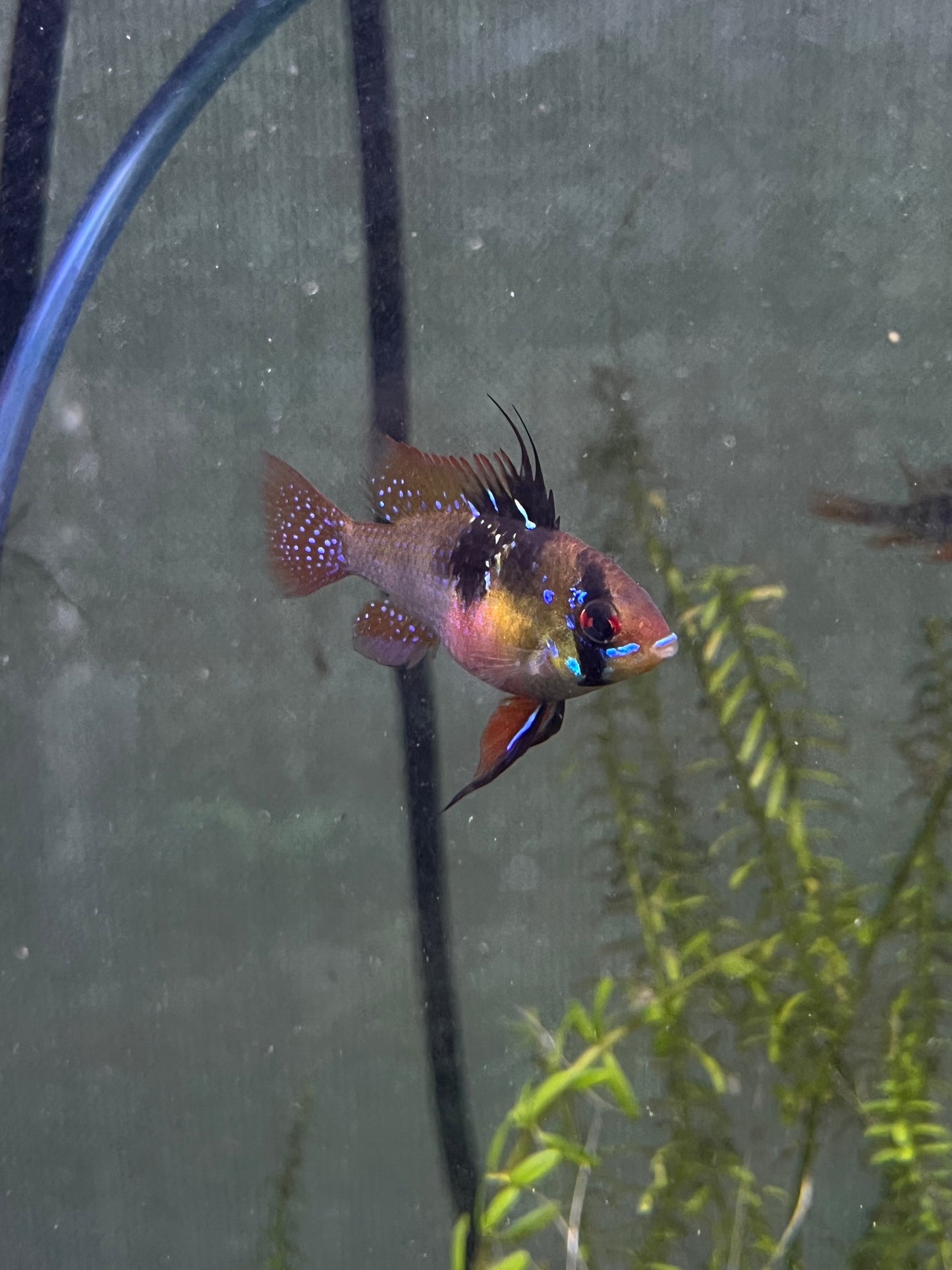YoCamron’s Aquatics
German Blue Ram
German Blue Ram
Couldn't load pickup availability
German Blue Rams, scientifically known as Mikrogeophagus ramirezi, are stunning and popular freshwater fish native to the Orinoco River basin in South America. They are sought after for their vibrant colors, peaceful temperament, and interesting behavior. German Blue Rams are part of the Cichlidae family and are often regarded as a suitable choice for intermediate to experienced aquarists due to their specific care requirements.
Here are some key points about German Blue Rams and their care:
1. Appearance: German Blue Rams are characterized by their vibrant electric blue coloration on their body and fins, along with a gold or yellow abdomen. They have a compact and laterally compressed body shape, reaching an adult size of about 2-3 inches (5-8 cm). Males typically have longer and more pointed dorsal fins compared to females.
2. Water conditions: German Blue Rams thrive in warm and slightly acidic water. A pH range of 6.0-6.5 is ideal for their overall health and well-being. Maintain the water temperature over 80°F (27°C) to mimic their natural habitat. Use a reliable heater and thermometer to monitor and regulate the temperature.
3. Tank setup: Provide German Blue Rams with a well-planted aquarium that replicates their natural environment. They appreciate having plenty of hiding places among the plants, rocks, and driftwood. A tank size of at least 20 gallons is suitable for a pair of German Blue Rams, with larger tanks offering more swimming space.
4. Water quality: Along with maintaining the proper pH and temperature, it is essential to ensure excellent water quality. Regular water changes, around 20-30% every week, help keep the parameters stable and remove accumulated waste. Use a good filtration system to maintain clean water and minimize ammonia and nitrate levels.
5. Tankmates: German Blue Rams are generally peaceful but can become territorial during breeding. They are best kept in a species-specific aquarium or with peaceful community fish. Avoid aggressive or large fish that may stress or intimidate them. Good tankmates include tetras, rasboras, small catfish, and peaceful dwarf cichlids.
6. Feeding: German Blue Rams are omnivorous and enjoy a varied diet. Offer them a mix of high-quality pellets or flakes, supplemented with live or frozen foods such as brine shrimp, bloodworms, and daphnia. A balanced diet ensures their optimal health and coloration.
7. Behavior and breeding: German Blue Rams are known for their interesting behavior. They are intelligent and can display territoriality, especially during breeding. They form monogamous pairs and may dig small pits in the substrate for spawning. If conditions are suitable, they may breed in the aquarium, but breeding can be challenging.
German Blue Rams are captivating and rewarding fish to keep. Their vibrant colors and peaceful demeanor make them an attractive addition to a well-maintained aquarium. By providing them with suitable water conditions, a peaceful environment, and a varied diet, you can ensure the health and happiness of these beautiful fish in your care.
Share




